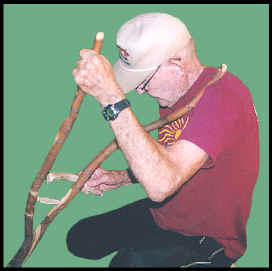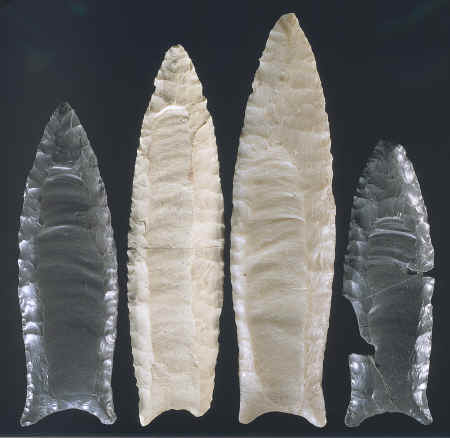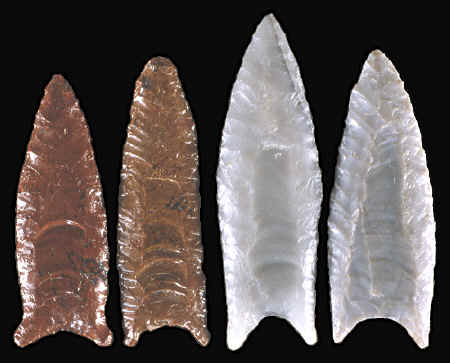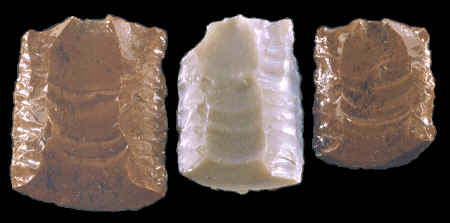|
|
|
Swoose has been demonstrating his long fluting technique on preforms that do not relate to either Barnes or Cumberland manufacturing technology. Many of the preforms were made with his flake-over-grinding technique that he is famous for and he uses to produce his artistic "twisted" points. Swoose says that he hopes that other flintknappers will try his technique to see what they will be able to make with it. It will be interesting to see how the Swoose fluting method will apply to accurately flaked Barnes and Cumberland preforms. |
|
|
Forked limb fluting is referred to as axial compression by Bob Patten who describes Swoose's technique for the first time in his recently published book "Peoples of the Flute, A Study in Anthropolithic Forensics," (2005, pp. 245-246). Patten believes that ancient peoples probably did not use this technique for various reasons. But the jury may still be out for the final word. One reason he believes that it may not apply to ancient technology is that "----this system can only apply to full-length fluting, and would avoid overshot terminations found in the archaeological record" (Patten, 245). However after viewing approximately 37 forked limb fluted preforms, eight of them are end snapped. Six of them are end snapped bases which are similar to examples found on prehistoric sites. Two were only represented by the points but these were also apparently snapped by diving flute flakes. Five were made from Obsidian and three from chert. |
|
|
Another reason given why prehistoric knappers may not have used forked limb fluting is that the device, a forked limb, would add to much to the flintknapping tool kit to transport. But "Swoose" has demonstrated that the technique is so simple that even a hoe handle pressed against a small tree trunk will also give the same results. Flintknapper and primitive technology instructor Bob Withrow has suggested that the same method might be achieved with tools that may already have been available to the Barnes and Cumberland knappers. The shaft of a spear could have been used as a lever pressing against a tree or piece of wood. A forked limb may not have been needed at all. |
|
|
|
|
Today's flintknappers are demonstrating that
there is always room for experimentation. Discovering new ways to
replicate old technology is still possible. "Swoose's" method of
fluting should be tested further. The technology is very simple and that
should make it a candidate for further investigation. It will be
interesting to see if this
technique can be applied to the proper manufacture of Barnes and Cumberland points.
"Swoose" says that the patent number on the forked limb should be number 0001. But no matter how the research turns out, thank
you "Swoose" for a good idea. |
|
|
"REFERENCES"
1912,
Hodge, Fredrick Webb, "Handbook of American Indians North of Mexico,"
Part 1, pp. 611-612. |
|



